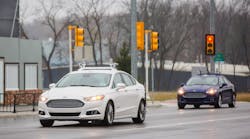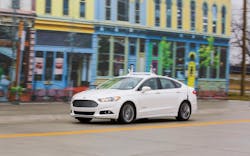So here’s a thought: what if the growth of car- and ride-sharing services added to the adoption of autonomous vehicles (AVs) actually increases the number of cars and trucks on our roads?
That’s one of the more interesting conclusions reached by consulting firm Arthur D. Little (ADL) in a new study entitled The Future of Automotive Mobility, which is based on a global survey of 6,500 motor vehicle customers, regulators, and manufacturers.
In another interesting twist, Wolf-Dieter Hoppe – one of the authors of this study and an associate director with ADL – noted that “the future of mobility” will no longer depend primarily on the preferences of customers but will increasingly be driven by regulation as cities seek to resolve problems such as traffic congestion and poor air quality.
He also thinks vehicle purchasing dynamics are going to shift dramatically as well.
“Millions of individual customers will be replaced by a few very large, multinational fleet operators,” Hoppe said. “These could take over the dominant role of OEMs in the ecosystem, as they would have direct customer access as well as considerable volume power. In particular, this would be a problem for today’s premium manufacturers.”
But Klaus Schmitz, the reports other co-author and a partner in ADL’s automotive division, added that this “shift” is also going to drive an increase in vehicle sales as consumers ditch “legacy modes” of public transit in favor of car- and ride-sharing plus AVs.
“The advantages of the coming new mobility options attract customers: almost one-third of those customers using public mobility modes such as trains and buses today would change their behavior and switch towards the above-described mobility modes – adding further capacity requirements to the [road] system,” he said.A key component of autonomous driving will be “mobility-on-demand” solutions, in which customers use “robot taxis,” Schmitz noted. Based on real mobility data from almost 100 mega-cities, ADL simulated the effect of robot taxis upon mobility behavior and car sales and came up with some surprising results.
For example, in the firm’s “moderate scenario,” in which 11 metropolitan regions implement those “new forms of urban mobility” by 2030 described above – specifically more AVs and “robot taxis” – global vehicle sales will jump to 121 million vehicles a year, which is a 39% increase compared to today’s volumes.
“The realistic scenarios we have calculated on real urban data and statistically relevant customer preferences suggest a total production volume worldwide of between 110 and 121 million vehicles – which is more than many experts predict,” Schmitz stressed.
Whoa; that would certainly add a new dynamic not only to our roads but to freight volumes, too, as automotive OEMs ramp up parts orders to supply their assembly lines.
Of course, in large measure, ADL’s predictions hinge upon the acceptance of AVs by the motoring public, which certainly isn’t a given at this stage.
For now, then, it’s a waiting game.




